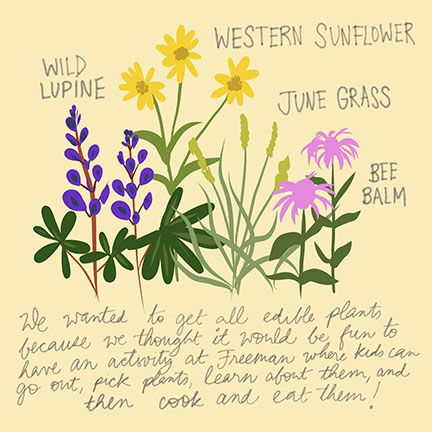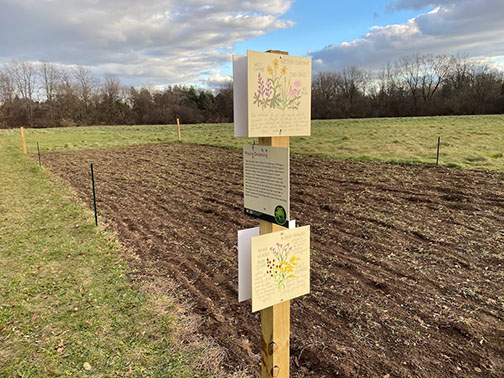
 back to all news
back to all news
Master's practicum reimagines Freeman Environmental Education Center

School for Environment and Sustainability (SEAS) master’s student Esha Biswas (MS ’23) is combining her knowledge of ecology, the arts, and education to help the Ann Arbor Public Schools (AAPS) reimagine their Freeman Environmental Education Center (FEEC) as part of her master’s practicum. Her project includes helping to convert a former athletic field at FEEC into a restored prairie and active environmental education site, developing the accompanying curriculum, and incorporating various artistic practices in the process.

AAPS has two objectives for the space, which consists of five 25 ft. by 25 ft. study plots: replace non-native turf grass with species native to Michigan prairies and create a space for various environmental education activities.
Biswas is working with two full-time AAPS environmental educators, Coert Ambrosino and David Szczygiel, to create a restoration plan. AAPS students are being included in the process to give them a sense of leadership in the space. For example, students selected native species for the site under Biswas’ guidance. “I completed the initial research into prairie plant species native to Michigan, along with their sunlight and soil condition needs,” she said. “This curated list of different species, their bloom time, color, and other characteristics, such as benefits they offer to pollinators, was provided so students could assess which species they wanted to see here at the site. I then created digital sketches of the selected species and their rationale as a way to summarize data visually through art.” These sketches are now printed and displayed as signage on site.
Selecting plant species is just one strategy Biswas is using to connect students with the restoration of the FEEC site. Students have planted native seedlings and spread seeds, and will help create an immersive art installation on site this summer as an opportunity to teach youth and the public about prairie root systems.
Controlled burns are another aspect of the restoration project that will be part of the future management of the site. Controlled burns are an Indigenous practice that have been used for millennia in many management strategies and are essential for some species’ reproduction cycles, such as Jack pine trees. These burned areas, according to Michigan’s Department of Natural Resources, “quickly regrow, providing abundant food and habitat for animals” that would not be found in an area that was overtaken by large trees in a forest setting. As a part of her practicum, Biswas is creating a diverse array of interdisciplinary, experiential lesson plans on topics such as fire and prairie ecology, nature journaling, edible plants, seed collection, and fiber arts using natural materials.

Biswas is dedicated to making environmental education accessible for students of all backgrounds, especially through creative means like art, storytelling, and grounding her work in traditional ecological knowledge (TEK). As part of her practicum, she also is creating a children’s book on prairie restoration as well as an interactive, family-friendly “field guide” about restoring lawns to native plant communities.
“My SEAS advisor, Sara Adlerstein Gonzalez, continues to be absolutely instrumental in helping me combine my passions for ecology and art in this project,” said Biswas. “Science and art can open up your world and, unfortunately, artists and scientists have been taught to separate themselves from one another; the reality is that impacting environmental change takes so much creativity, and increasing points of accessibility will only strengthen the ways we can advance environmental healing.”
The project has been a physical practice of Biswas’ belief that science, art, and justice can and should coexist on equal integrative footing within the education system. “Leading field trips with the AAPS Environmental Education Program gives me a palpable feeling of excitement, especially when students get to explore their environment, go to new biomes, and learn new things about plant pollination or animal behaviors,” she said. “I also feel the need to talk to students about the land we are standing on and the history and legacy of colonialism. Integrating all of these principles into environmental education is essential when we think about the healing and reparations that need to take place in ourselves and the earth. My ultimate goal as an educator is to cultivate experiences for youth that help deepen their relationships to the land they are on. Big environmental change starts in all our hearts—in how we relate to the land and those around us.”
The restoration site at the Freeman Environmental Education Center is open to the public outside of school hours and is located at 3540 Dixboro Lane. Learn more about the project or follow Esha's EcoZine on Instagram.

